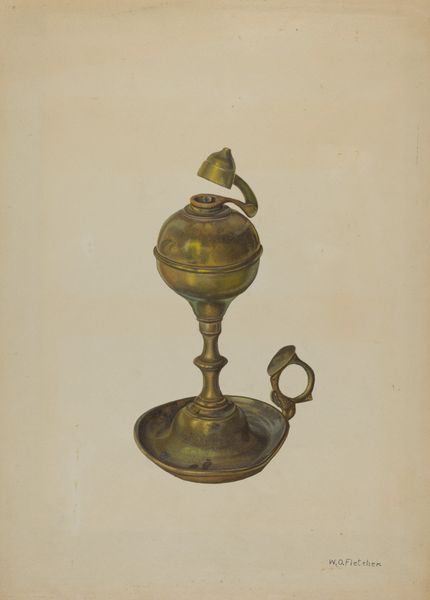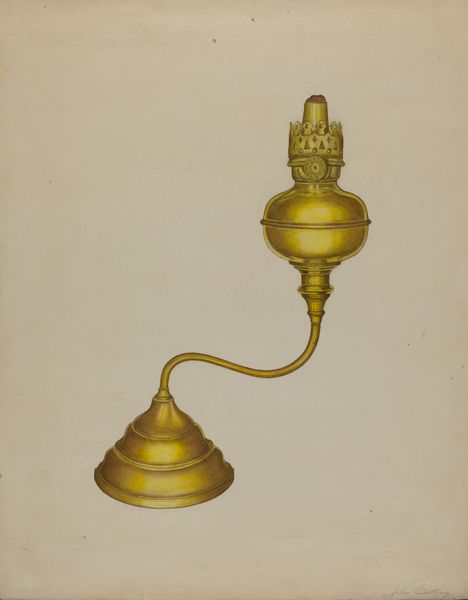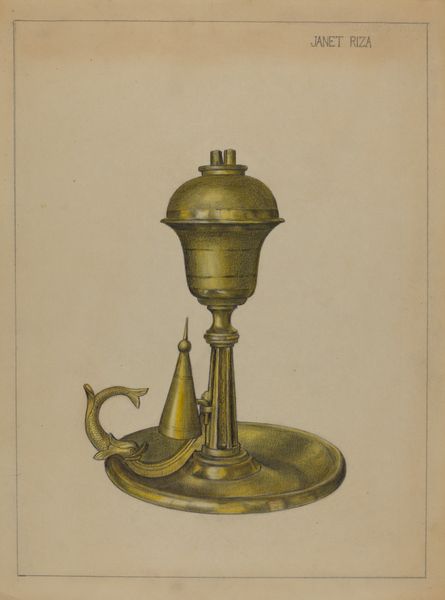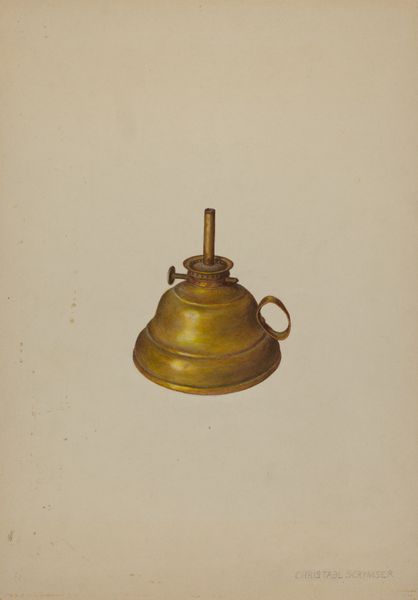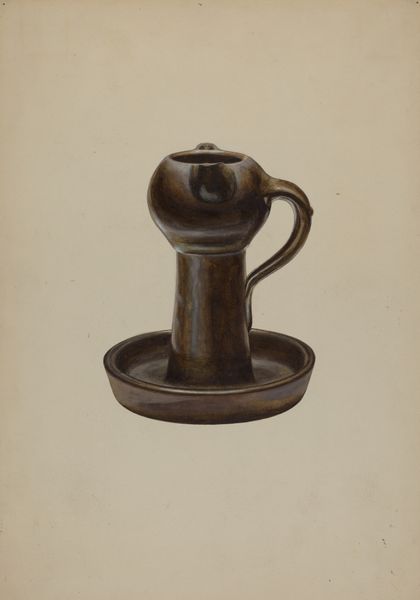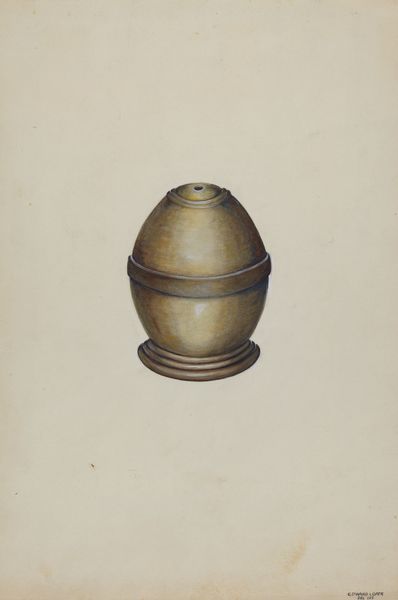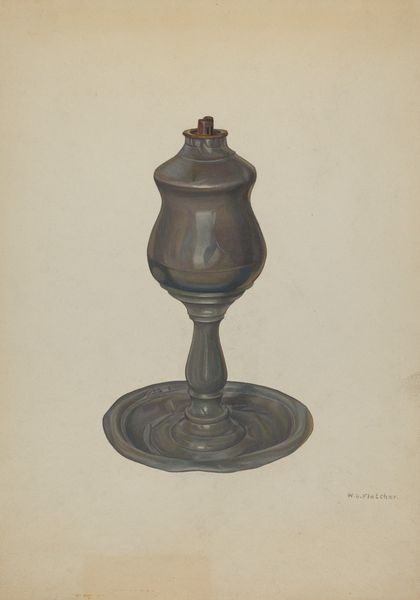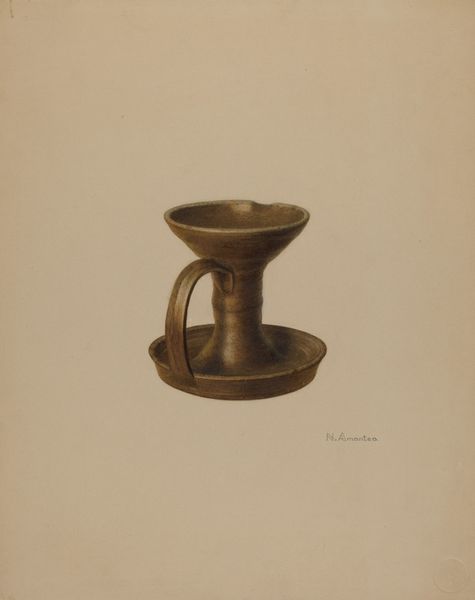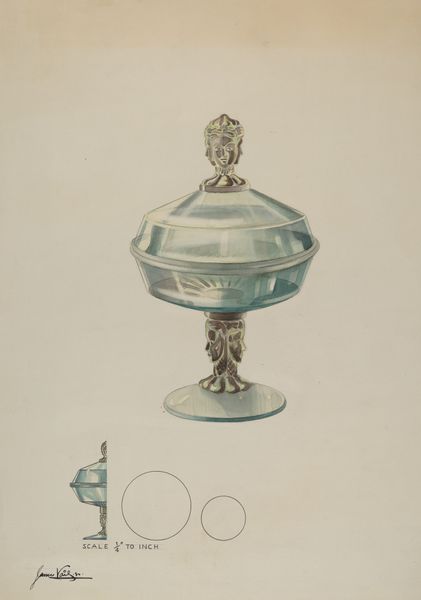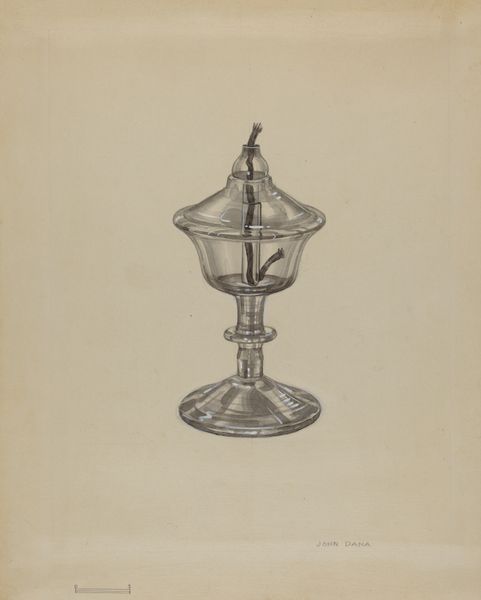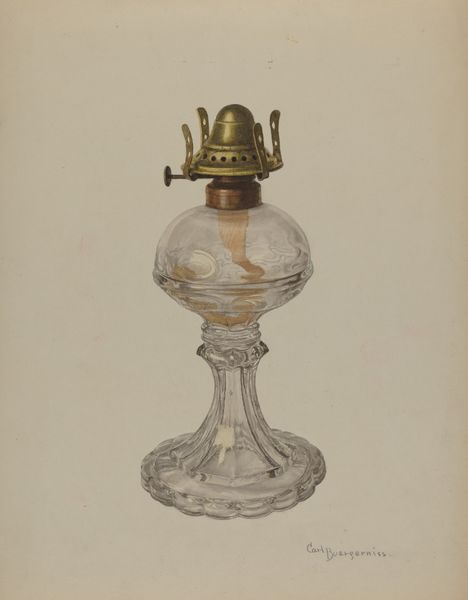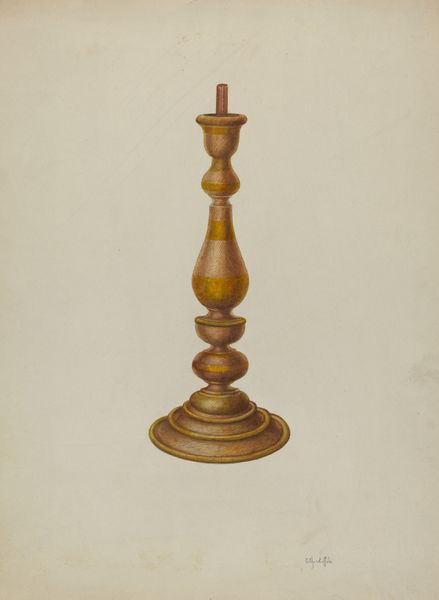
drawing, painting, watercolor
#
drawing
#
painting
#
charcoal drawing
#
oil painting
#
watercolor
#
academic-art
Dimensions: overall: 28 x 23 cm (11 x 9 1/16 in.) Original IAD Object: 4 1/2" high; 4 1/2" wide
Copyright: National Gallery of Art: CC0 1.0
Curator: This is David S. De Vault's "Sperm Oil Lamp," likely created around 1941. De Vault captures the object with a remarkable attention to detail through the use of watercolors and charcoals. Editor: My immediate thought is one of subdued luminosity. The artist has captured a sense of golden, gentle light, emanating almost alchemically from within the lamp itself. It’s a delicate construction of form. Curator: Indeed, the lamp serves as more than a mere object; it acts as a signifier of labor practices and cultural shifts. Sperm whale oil fueled lamps during a period marked by intensive whaling, which decimated whale populations and also led to international political disputes regarding maritime rights and animal welfare. Consider how the golden glow idealizes, even obscures, the labor practices. Editor: I see how context drastically reframes our view. Even so, there's no denying the compelling visual dynamic here. The textures alone - that smooth reservoir of oil sitting above the fluted stem and wide, accepting base - is an expert example of trompe-l'oeil. De Vault seems almost determined to transform base materials into precious metal with nothing more than a subtle modulation of watercolor pigment. Curator: Absolutely. Understanding the socio-economic context allows us to analyze how such art served both to represent and also potentially justify problematic industries. It becomes imperative to question whose perspectives are valued in these depictions. The romantic, painterly representation risks normalizing environmental exploitation and the erasure of animal suffering. Editor: While I can't disagree with the crucial necessity of critical examination, I think it would be a mistake to assume any ill-will. Sometimes, aesthetic pleasure is its own valid subject. The play of light and shadow, the harmonious arrangement of shapes—these are, in themselves, noteworthy artistic achievements. Curator: A valid point, but the artwork invites critical engagement that encourages discussions about accountability and justice concerning our shared planetary future. Editor: A perfect convergence: historical consciousness wedded to skillful formal rendering.
Comments
No comments
Be the first to comment and join the conversation on the ultimate creative platform.

